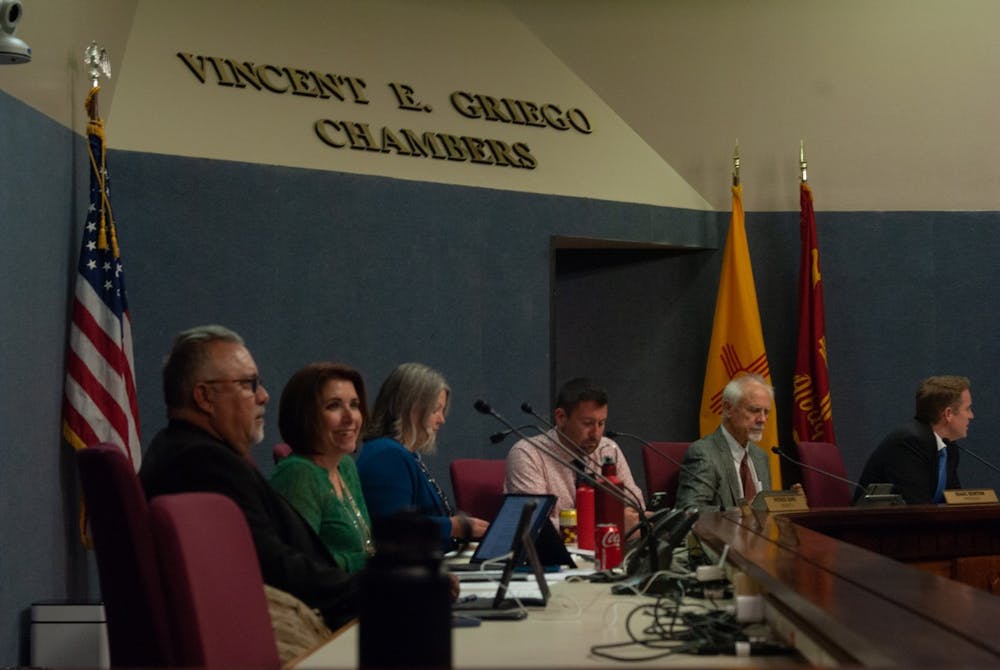The city’s Animal Welfare Department will now be directed to donate animal tissue from spay-and-neuter clinics to the University of New Mexico Health Sciences Center for biomedical research, after a resolution unanimously passed during the Monday, Nov. 21 Albuquerque City Council meeting.
This tissue will be used to create in-vitro culture models with the intention of reducing the number of animals used in laboratory testing. Dr. Xiaozhong Yu, a professor at the UNM College of Nursing, said that they have been working at UNM to develop and validate methods for using in-vitro models as a substitute for animal testing.
“With the recent advancement in biotechnology, the in-vitro model mimic the structure and the function of living organ. We have more alternatives to animal studies to screen and predict toxicity in human … We hope we can provide new scientific advancements in validating those in-vitro approaches,” Yu said.
The reproductive tissue left over at spay-and-neuter clinics is currently discarded as biohazardous waste, according to the text of the resolution. From here, the Animal Welfare Department will create a written agreement with the HSC to donate reproductive tissue to be exclusively used for the creation of in-vitro models.
Last year, the Animal Welfare Department conducted 9,996 spay and neuter surgeries, which is expected to increase in coming years, according to the resolution.
“Thousands of animals are used in experiments at UNM every year. We have an ethical responsibility to replace live animals in experiments wherever feasible. By using spay/neuter tissue normally discarded as biological waste, the reducing animal testing resolution could dramatically reduce the use of live animals at UNM,” Paige Ryan, government affairs manager for Animal Protection Voters, said.
Councilor Tammy Fiebelkorn, sponsor of the resolution, said that she consulted with scientists across the country to gain a better understanding on in-vitro models and their potential role in eliminating the use of live animals in biomedical testing after being approached by Yu about the resolution.
“This is just a really great opportunity for Albuquerque to be on the forefront of a movement to reduce, and hopefully eventually eliminate, the use of live animals in laboratory testing,” Fiebelkorn said.
Another resolution was unanimously passed to formalize the “Urban Tree Canopy Grant Program,” which would fund contracts and provide services for tree planting and maintenance throughout the city. This would also provide grant awards to the Tree New Mexico program, a community tree planting program which has been working in Albuquerque on planting projects.
The goal of this resolution, co-sponsored by Councilors Isaac Benton and Fiebelkorn, is to improve community health through the removal of pollutants as well as to reduce temperatures and lessen the “urban heat island effect,” which is a term used to describe the compounded high temperatures in urban areas due to dense concentrations of asphalt and pavement, which trap heat.
Last year, the city of Albuquerque released heat map findings which found large discrepancies between the hottest and coolest parts of the cities on the same day of the year. The highest temperatures were found in areas which relied heavily on public transportation.
“It’s really been gratifying seeing how many neighborhoods have benefitted from this program and, you know, temperatures have been getting hotter. We may disagree about the reasons, but they’re definitely getting hotter in New Mexico, and our sustainability and our resilience … and our health of our communities really depends on cooling down some of our urban temperatures that are typically much hotter than natural areas,” Benton said.
Get content from The Daily Lobo delivered to your inbox
The next City Council meeting will be held on Monday, Dec. 5 at 5 p.m. This one, as well as the last meeting of the year on Dec. 21, will be held via Zoom and can be viewed on GOV TV.
Zara Roy is the copy chief at the Daily Lobo. She can be reached at copychief@dailylobo.com or on Twitter @DailyLobo






